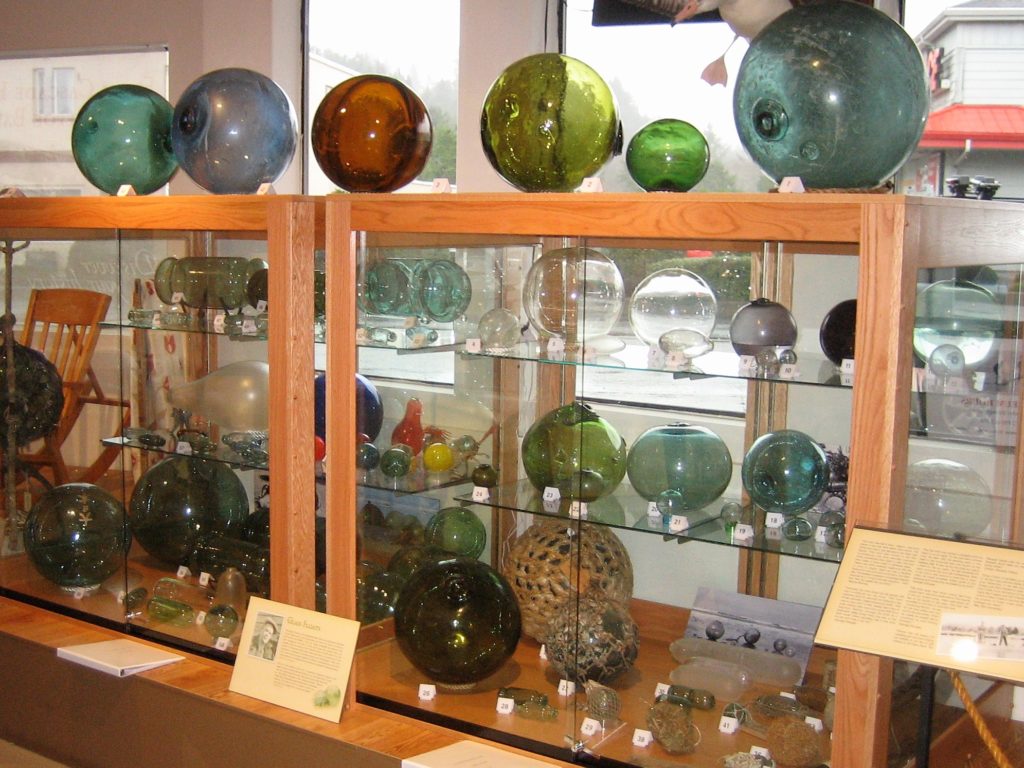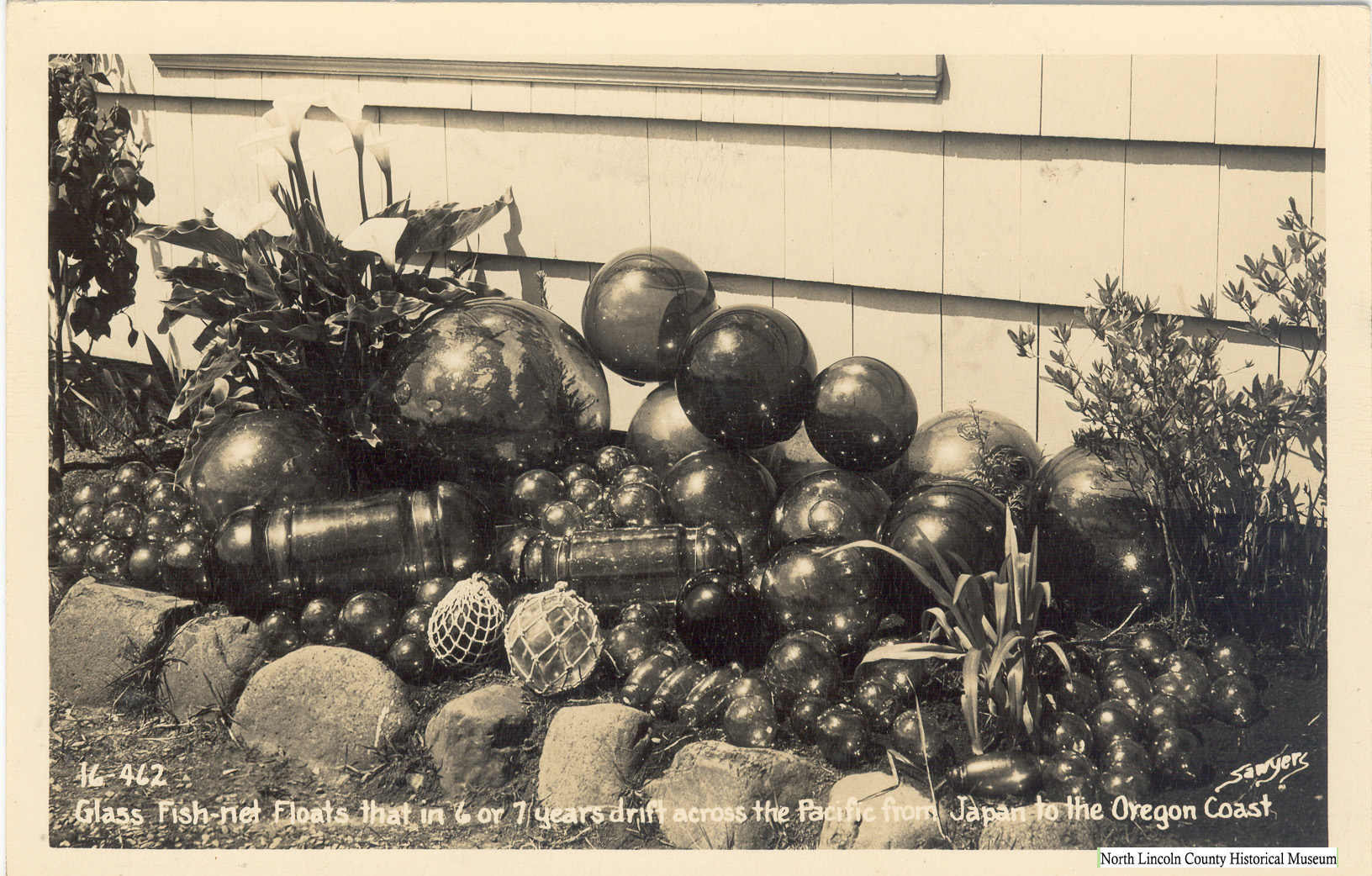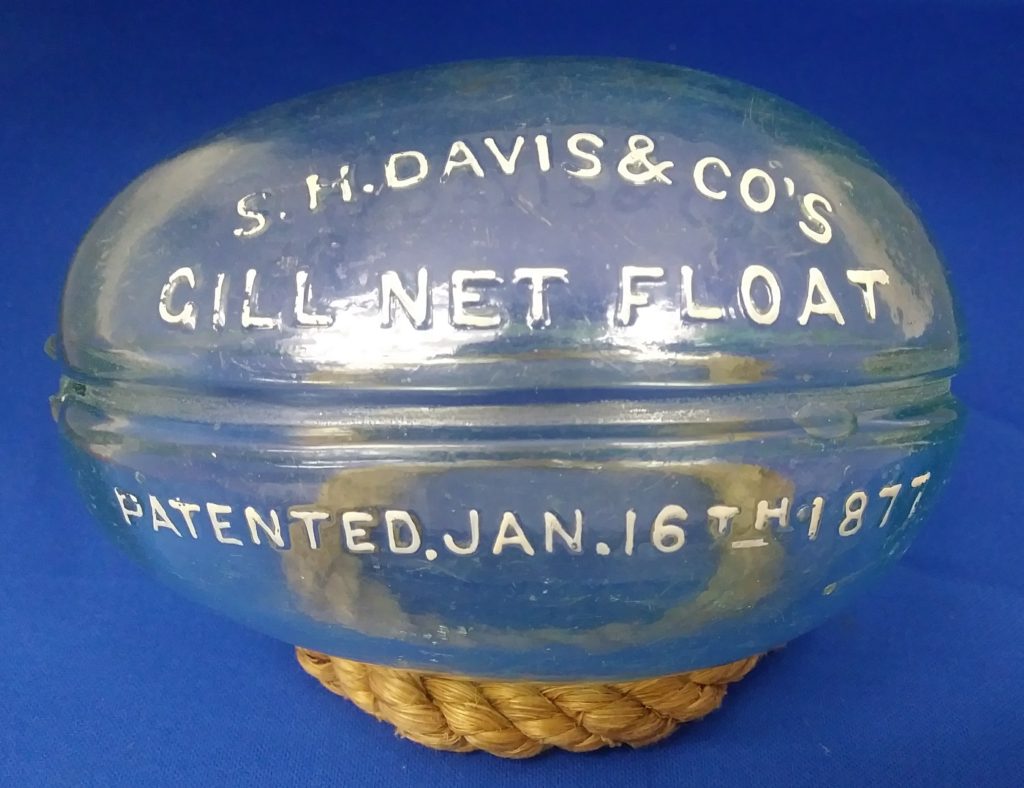Japanese Glass Fishing Floats

For centuries the Japanese have had individual families own and operate the fishing industry along the coasts of the Japanese islands. This exhibit displays the various sizes, shapes, colors, and methods used in glass floats developed for the fisherman.
Fisherman initially made their own floats from whatever glass was available to them. This consisted of recycled glass from mostly bottles. That is why we see a wide variation of shades of green glass used to make these floats. Over the years fairly large glass blowing companies were developed to supply the fishermen with hand blown floats. This process involved hundreds of glass blowers, as each float was handmade.
Floats in this exhibit were lost by fisherman at sea, and some still have their nets. They were caught up in the pacific currents and eventually, after long periods of time, were deposited by the tide on the west coast beaches of North America. Beachcombing became a hobby for some individuals that lived along the pacific shores, and large and small collections have evolved from these collectors. This exhibit displays floats from two large collectors that span many years.
JIM WATSON (deceased) donated a cross section of sizes, shapes, and types of Japanese glass fishing floats. Jim had probably the largest and most extensive collection of Japanese glass floats at the time he made this donation. He was instrumental in giving educational talks at the museum, of which there are recordings. The Watson Foundation was formed to hold his collection following his death.
NICK SIMPSON began float collecting when he found his first float while on a college marine biology field trip to the Oregon coast. After graduation from professional school, Nick and his wife moved to the Oregon Coast, and over the next 55 plus years has been an avid collector of Japanese (Asian) glass fishing floats. Recently he has helped assemble and create this current exhibit with floats he has donated, along with the Watson Foundation Floats.

American Made Glass Fishing Floats

We are very excited to announce the acquisition of a major collection of American made glass-fishing floats that are now on exhibit. Dr. Nick Simpson acquired this rare and varied collection over many years. He has donated it to the museum in the hope that it will be shared with this community, with our many coastal visitors and especially with glass float collectors and enthusiasts.
While many coastal residents are familiar with Japanese glass fishing floats, most aren’t aware that glass fishing floats were also produced in the United States back in the 1930’s and 1940’s. In the early 1930’s, American fishermen were using “Made in Germany” floats off the West Coast of the United States. The Northwestern Glass Company of Seattle, WA, established in 1932, saw a demand for these floats and began duplicating them in 1933. They made them by hand, rather than with machinery. After a short period of time, they discontinued this due to the small volume needed.
Then, in 1942, there was a rapid development of the shark fishing industry due to the demand for shark livers as a vitamin source. The fishermen used gillnets that were submerged to considerable depths, creating a need for a large quantity of floats that could be submerged and withstand high pressure.
The Northwestern Glass Company developed an automatic manufacturing and sealing system for floats, which increased production.
Ro Purser, American Glass Artist

Ro Purser was born in Fairbanks, Alaska (territory at the time) in 1949, and grew up on Humboldt Bay, in Arcata, California. After graduating high school in northern California in 1967, he took a job as a salmon troller in Washington. After seeing glass blowing in Berkeley, California, he was inspired to become a glass blowing artist. He continued to work in the fishing industry until he was able to afford to build his first glass shop in 1970 near Arcata in McKinleyville, California.
This was a revolutionary process, because virtually only large glass factories and university glass blowing facilities existed in the United States. This meant that he had to create his own equipment and weld furnaces, all from scratch. He was completely self-taught with the nearest glass blowing shop being 300 miles away. He learned to cast aluminum and bronze molds with his own foundry by 1972, which allowed him to make the molds necessary for blowing fishing floats.
He continued to work on and off in the fishing industry and in 1977, when the fishing fleet needed long line floats, they came to him to make them, and the rest is history. He pioneered making fishing floats from recycled glass, created beautiful fishing floats from many colors, and used many different creative stamps throughout the late ‘70s-early 80’s.
Ro Purser made beautiful glass artwork throughout his career and was an American glass fishing float pioneer. The North Lincoln County Historical Museum is excited to display some of his wonderful glass fishing floats from the Nick Simpson Collection.
Below is a “Tiny Tour” of our Glass Fishing Float collection here at the museum:
Below is a recap of our temporary Float Odyssey exhibit and Float Identification Day event that took place on February 19th, 2022.











